4 Types of Ticks in Massachusetts (With Pictures)
-
Pete Ortiz
- Last updated:
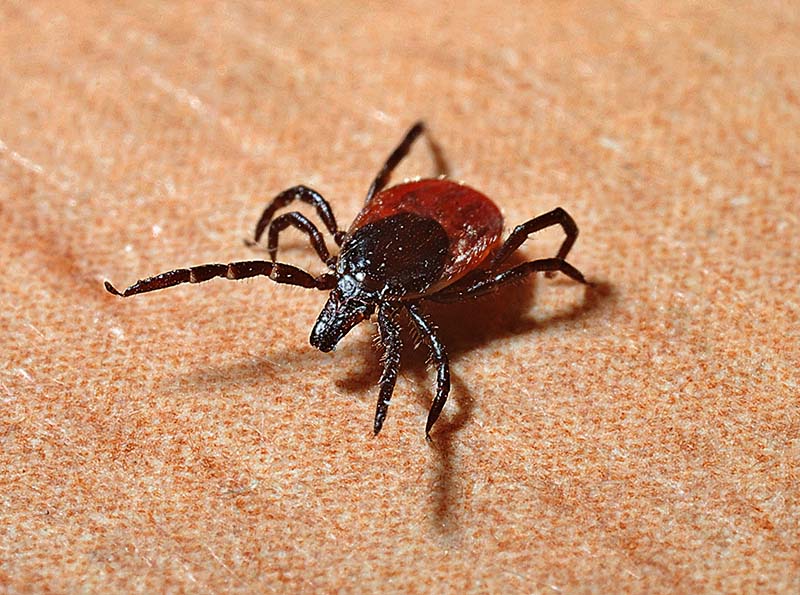
Ticks are clingy and potentially lethal parasites that attack human beings, pets, and livestock. They are often hard to notice, thanks to their small size that enables them to hide easily in our furry friends’ bodies or even human bodies.
Most tick bites, especially larva and nymph bites, go unnoticed. But the problems associated with ticks, such as diseases and skin irritation, make it essential to get rid of them from our homes and workplaces.
Knowing the different types of ticks in your area and their associated risks help you to handle the situation and respond appropriately. Let’s dig into the four main types of ticks in Massachusetts.
The 4 Common Types of Ticks In Massachusetts
1. Dog Ticks (Dermacentor variabilis)

| Color: | Medium-dark with a white upper-abdomen |
| Average lifespan: | 2 years |
| Size: | 0.25 inches, females can grow to 0.5 inches |
| Life cycle: | 4 stages (egg, larvae, nymph, adult) |
Dog ticks fall into brown dog ticks and American dog tick species. The American dog ticks are prevalent on the west coast and eastern half of the United States, while brown ticks can be found in the entire country. These ticks constitute the most prominent tick family in Massachusetts.
They transmit diseases such as Tularemia and Rocky Mountain spotted fever. They can also cause paralysis with their neurotoxins. However, adult males don’t transmit infections.
Most dog ticks have a medium-to-dark hue with tan mottling, while some female ticks’ upper abdomen is off-white. These tick families have less distinct heads than deer ticks and more elongated legs, predominantly on brown ticks.
The dog ticks prefer grassland habitats where they mostly lie on grasshades waiting for their unsuspecting hosts. The ticks often fold their front legs, ready to latch onto animals passing by.
As the name suggests, dog ticks love the blood of dogs and other medium-sized furry animals, including raccoons, possums, and cats. The ticks also suck human blood whenever they get a chance. But these ticks are slow feeders.
One strange aspect of dog ticks is that they can survive for two years without eating. The prolonged survival shows that a typical dog tick can remain in your yard and continue causing havoc for two years!
2. Deer Ticks (Lxodes scapularis)
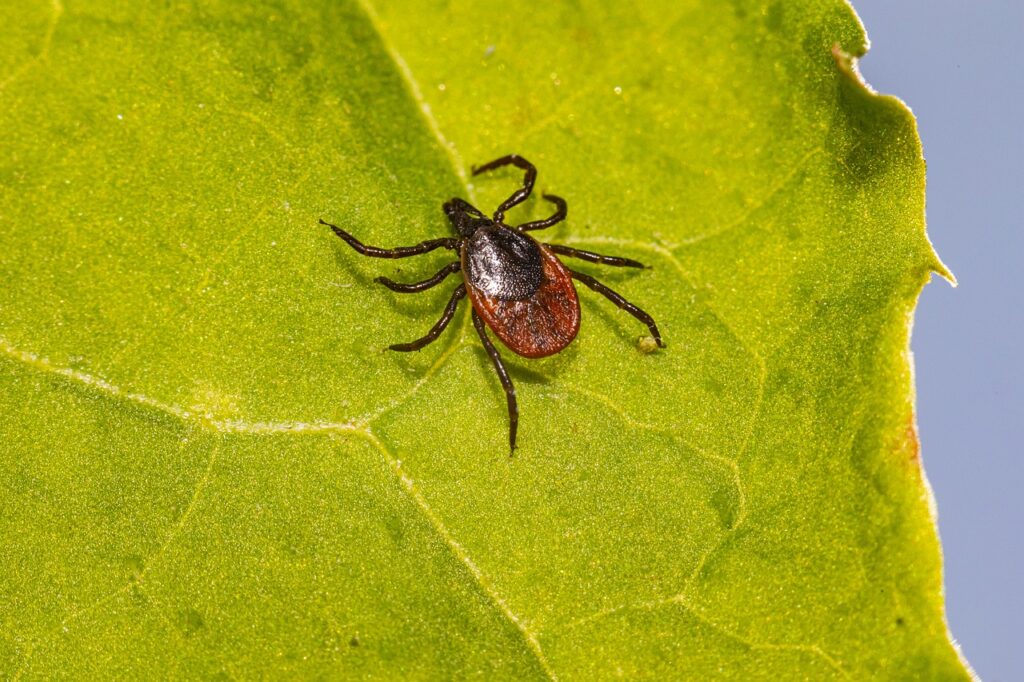
| Color: | Red-brown, off-white patch |
| Average lifespan: | 2 years |
| Size: | 0.078 to 0.137 inches |
| Life cycle: | 4 phases (egg, larvae, nymph, adult) |
The deer tick, also called a black-legged tick, is a hard-bodied tick found in the eastern half and the mid-western United States and Canada. The tick’s size varies depending on different factors, such as the age and the amount of blood sucked. It’s worth noting that deer ticks are among the smallest tick family species in Massachusetts.
Female deer ticks are characterized by red-brown bodies, a distinct head, and moderately long dark-brown legs. The female ticks also have an oval orange abdomen and an off-white patch on their upper abdomen.
Males exhibit a similar structure to their female counterparts but are relatively smaller. The male deer ticks also don’t have the orange abdomen section and are entirely dark.
The larvae and nymph are as tiny as a full-stop, making it challenging to detect them on your furry friends or your body when they suck blood.
Adult deer ticks mate on or off their host, and females feed for several days until they swell twice their average size. The females drop off the host when engorged and lay eggs before dying.
3. Brown Tick (Rhipicephalus sanguineus)
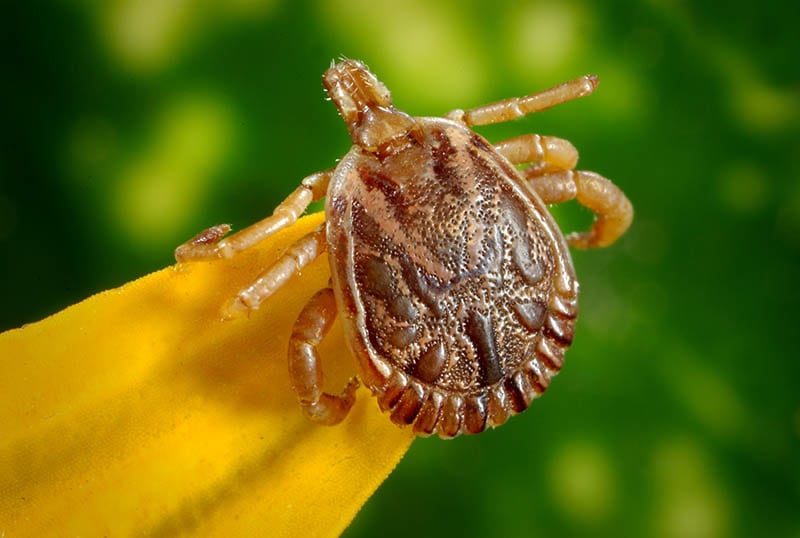
| Color: | Reddish-brown |
| Average lifespan: | 2 years |
| Size: | 1.14-1.30 mm and a width of 0.57-0.66 mm |
| Life cycle: | 4 phases (egg, larvae, nymph, adult) |
The brown dog tick is the only indoor tick in Massachusetts. They have long body shapes, and they differ from other ticks in Massachusetts because they complete their entire lifecycle indoors, increasing their presence in homes. The ticks are prevalent in warm climates, where they attack dogs and other furry animals.
The good news is that brown ticks don’t attack human beings. However, these ticks carry bacteria associated with Rock Mountain spotted fever. The feeding pattern includes the tick attaching itself to the host for a meal for at least six hours, which is enough time for disease transmission to occur.
Female brown ticks consume large blood meals while males take small portions. The female’s body size increases a hundredfold after consuming an enormous meal. The tick’s larvae have three pairs of legs with body dimensions of about 0.54 mm and 0.39 mm in length and width, respectively.
These ticks transmit canine diseases such as Canine Babesiosis and canine Ehrlichiosis. You must take your furry friends to a veterinarian as soon as you notice odd symptoms or the presence of brown ticks.
4. Lone Star Ticks (Amblyomma americanum)
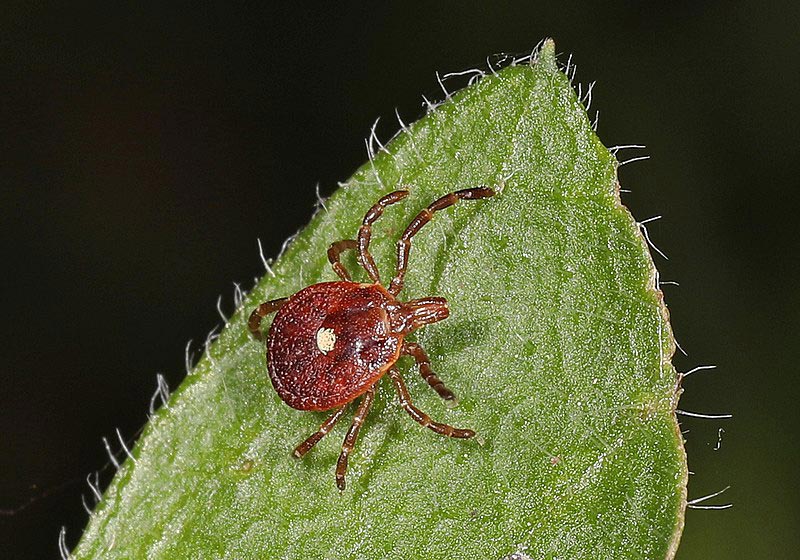
| Color: | Reddish brown |
| Average lifespan: | 3 years |
| Size: | About quarter-inch length |
| Life cycle: | 4 phases (egg, larvae, nymph, adult) |
The lone star tick is a hard-bodied tick found in Massachusetts. These ticks appear in dense vegetation areas in the eastern half of the United States, mainly in Massachusetts.
Some of the identifying characteristics of lone ticks include a reddish brown body with a white star resembling a dot resembling a star on the center top of its abdomen; the ticks become slate gray when engorged. They have a flattened oval shape and six legs in the larvae stage, while nymphs and adults have eight. The males are smaller than females; an unengorged female lone star is about an eighth of an inch.
These ticks frequent fields and wooded areas and can be found near homes and buildings in rural or secluded areas. You can rarely find these ticks indoors, such as in living rooms, except on your furry friends’ bodies.
The ticks love areas where their mammalian hosts, such as raccoons, deer, and opossums, inhabit. These ticks also live adjacent to water bodies waiting for animals that come to drink.
Lone stars need a blood meal to grow in each stage of their lifecycle. Female ticks must also engorge themselves fully to obtain sufficient nourishment to produce and lay thousands of eggs, as only a few of such eggs survive to maturity.
These ticks carry various diseases, including tularemia and ehrlichiosis.
Facts About Ticks
- Ticks prefer warm conditions, making summer and spring the active season for ticks in Massachusetts. The ticks become less active and hibernate during the hottest days in mid-summer and rise as fall approaches.
- Most ticks in Massachusetts don’t transmit Lyme disease except deer ticks. Human beings contract from ticks through the tick’s saliva. Individuals who contract Lyme disease can suffer severe effects.
- The bite’s location can help distinguish between tick and insect bites. Tick mainly bites the scalp, legs, groin, and the back of the neck.
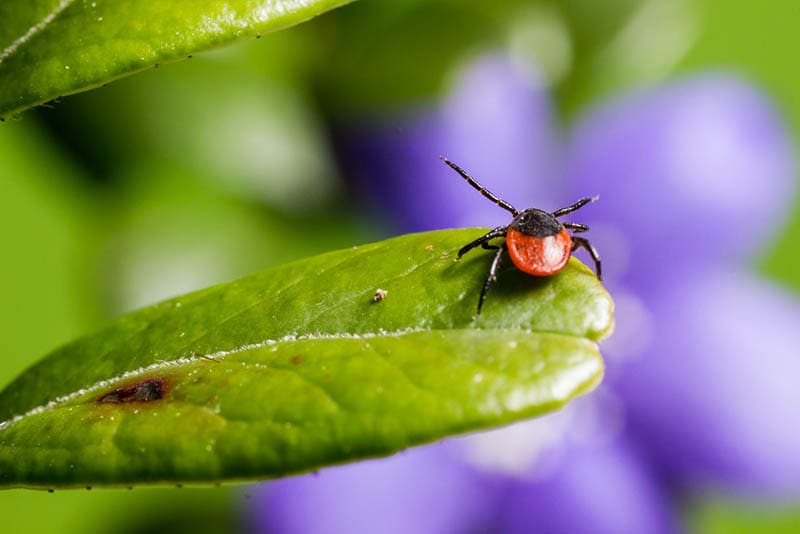
How to Avoid Ticks in Massachusetts
The biggest problem associated with ticks is the transmission of diseases to humans and animals. Statistics from the Centers for Disease Control and Prevention show that about 300,000 people get Lyme disease annually in the US through tick bites.
To avoid ticks bites, it’s advisable to don brightly colored long-sleeved shirts, pants, and closed shoes whenever you are stepping out into vegetation areas. The bright colors help you to detect any tick clinging to your clothes and remove it, while the long-sleeved garments cover most part of your body.`
Also, refrain from walking through or standing in grasslands or thickly wooded areas with heavy foliage that might brush against you. Keep your pets off such places as they can easily carry ticks to your home. Ensure that you mow grass in your yard and eliminate all trash and old furniture to keep your yard clean.
Wash your furry friends regularly with pet shampoo and other recommended chemicals to keep ticks at bay. You can also use bug repellants.
Conclusion
All four types of ticks (dog ticks, deer ticks, brown ticks, and lone star ticks) are prevalent in Massachusetts transmit diseases. Take the required prerequisites to keep your family and furry friends safe. It’s essential to call a pest control service if you’ve been experiencing persistent tick problems in your home.
Featured Image Credit: PxHere
Contents



